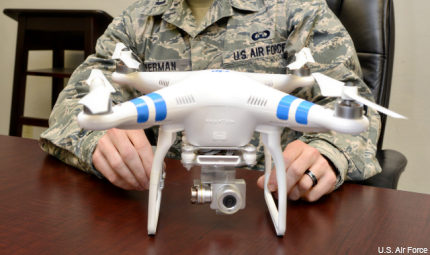Army looking for help in defending against small UAS
In a recent solicitation, the Army asks for assistance in detecting and identifying drones of less than 20 pounds.

The DJI Phantom is one of the types of drone the Army wants to counter.
The Army recently is looking for help in detecting and defending against unmanned aerial vehicles, specifically, small, expendable aircraft that can pose various threats to friendly forces and facilities if outfitted with explosives or radioactive material.
In a sources sought notice, the Army said it is interested in technologies capable of detecting UASs weighing less than 20 pounds, identifying what type they are, and then using non-kinetic methods such as radio frequency or GPS jamming to neutralize the,.
The primary focus will be on countering aircraft similar to the DJI Phantom and X-UAV Talon, which are capable of both vertical take-off and landing as well as fixed-wing flight with a maximum weight of 20 pounds, operating altitude of 1,200 feet, speed of 115 miles per hour and range of 11.5 miles. The Army also specifies that detection should be capable from more than 2,600 feet and that the system should be able to differentiate between multiple UAS, manned aircraft and natural flora and fauna.
Vendors will be able to showcase their solutions at a test event hosted by the Army sometime in December.
Countering small drones is something the Army has focused on lately, because they’re so easily available and inexpensive enough to be expendable. The Army has already developed some forms of counter UAS platforms, modeled after from platforms originally modeled for countering rockets, artillery and mortars min order to counter the possibility of UAS being used as “flying IEDs.” The system can include a 50mm cannon to launch command guided interceptors and use a precision tracking radar interferometer as a sensor, a fire control computer and a radio frequency transmitter and receiver for launching munitions into an engagement basket.
While the Army’s recent solicitation seeks non-munitions based counter methods, companies such as Lockheed Martin have developed programs capable thwarting drones with both munitions (for a combat type environment) and non-kinetic techniques for more urban and civilian environments.




